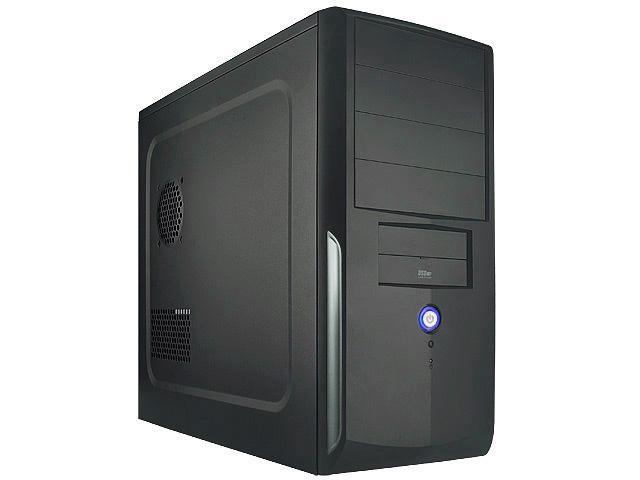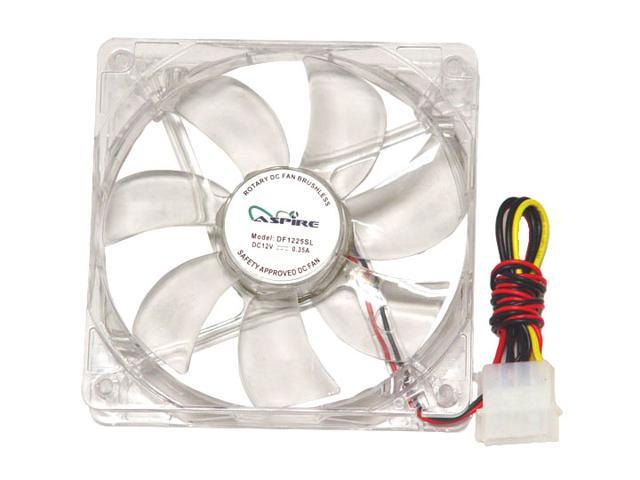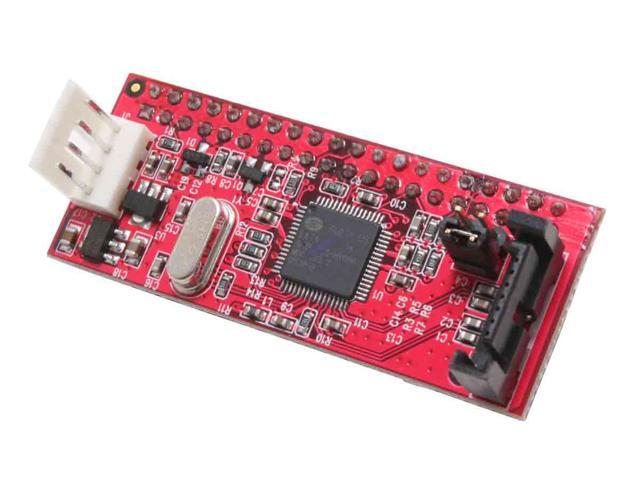Building a New PC
Last week the power apparently went off in my home while I was out because my clocks were all flashing the wrong time. No biggie. That kind of thing happens all the time, and the only consequence is that you have to reset all your clocks.
The next day I realized my PC wouldn't boot. After a whole lot of fiddling and faddling, I decided my motherboard must have gotten fried from a power surge even though it was under the watchful eye of a surge protector.
Since it's a few years old now, I went ahead and decided to upgrade to a new box, so I did a bit of research and bought all the equipment that was cheap, but should also keep me running at good speeds for years to come. This is the story of that computer. I'll probably tell it in a piecemeal fashion, starting with a simple list of all the pieces of my puzzle.
I'm keeping my old hard drives, optical drives, and floppy drive (just carrying it along because it's there), but everything else will be new equipment. I considered keeping the same case, but it was a Dell and custom built for just the hardware that was already in it.
So here's a rundown of all the new stuff:








Oh, and of course, to help prevent any future stupid power surges, I picked up a second UPS from Costco and I'll use that to power everything that I hold sacred.
As far as the actual build goes, though, I should receive my last component in the mail tomorrow, then I'll start putting this crap thing together and hope everything works swell. If I'm not too lazy I'll take photos or video and share them in a later blog post.
[update]
I was in the middle of gutting the old box and putting together the parts I've received thus far when I realized I can't use my old video card because my mobo doesn't have any AGP slots. Whoops! So I headed on over to Best Buy and got a great deal on this (got it for $99, but at New Egg it's $145):

The next day I realized my PC wouldn't boot. After a whole lot of fiddling and faddling, I decided my motherboard must have gotten fried from a power surge even though it was under the watchful eye of a surge protector.
Since it's a few years old now, I went ahead and decided to upgrade to a new box, so I did a bit of research and bought all the equipment that was cheap, but should also keep me running at good speeds for years to come. This is the story of that computer. I'll probably tell it in a piecemeal fashion, starting with a simple list of all the pieces of my puzzle.
I'm keeping my old hard drives, optical drives, and floppy drive (just carrying it along because it's there), but everything else will be new equipment. I considered keeping the same case, but it was a Dell and custom built for just the hardware that was already in it.
So here's a rundown of all the new stuff:
CPU - Intel BX80580Q9400 Core 2 Quad Q9400 Central Processing Unit
After comparing specs and prices, I decided to snatch up the Intel Q9400. It is a quad core for super fast execution, 45nm form factor for energy savings and heat reduction, and can be overclocked from its stock 2.66ghz speed up to at least 3.6ghz with air cooling.
CPU Heat Sink - ARCTIC COOLING Freezer 7 Pro 92mm CPU Cooler
Since I plan on doing some moderate overclocking, I figured I'd need a better heat sink than the one that comes with the CPU. After a lot of reading, I settled on the Arctic Cooling Freezer 7 Pro 92mm CPU Cooler, which comes with a small price tag and excellent cooling.
Motherboard - GIGABYTE GA-EP45-UD3P LGA 775 Intel P45 ATX Intel Motherboard
This wasn't as easy a choice for me because there are so many options to choose from. The most important things I was considering were price, stability, and ability to overclock. I settled on a rather excellent board called the Gigabyte GA-EP45-UD3P. They've been making better and better boards in the past few years and this beauty really takes the cake when compared to anything else in its price range. I also found several great videos at YouTube illustrating its features and a detailed step-by-step on how to overclock with it, so that's nice.
Power Supply - OCZ OCZ600SXS StealthXStream 600W Power Supply with Four +12V rails, ATX, and 120mm Fan
I could've stuck with my old PSU, but I figured since it was probably a power surge that killed my motherboard, I couldn't trust the power supply any more. There are a lot of very cheap options, but after reading about a lot of people having PSU death after a short time, I decided to spend just a little bit more for a unit that will be very reliable and beefy enough to support any hardware I might decide to throw at it some day. Plus, it has a big 120mm fan that's supposed to be very quiet.
RAM - OCZ OCZ2N10662GK 2GB 240-Pin DIMM PC2-8500 DDR2 1066 SDRAM
My old beast had only 1GB of slow, old memory, and it could have been damaged by the power surge, so I got two sets of a pair of sticks for a total of 4GB running at 1066 mhz. The mobo actually supports faster speeds, but RAM at those speeds cost too much more than I was willing to spend.
Computer Case - Rosewill R220-P-BK Black 0.5mm SECC Steel ATX Mid Tower Computer Case
I didn't care anything about the case except that it needed to have sufficient space for any added hard/optical drives I might need in the future. I got lucky with a simple $25 case that also included a 120mm fan with room enough for 4 optical drives and 5 hard drives. It is even solid black, so that's a nice bonus.
Case Fan - APEVIA CF12SL-4C 120mm Multi-Color LED Case Fan
I'm not too worried about temperatures inside the case, but I figured I'd be slightly more safe than very sorry later and snatched up an additional 120mm fan to stick inside the case. The one that came in the case will be used for exhaust in the back (the heat sink fan will be blowing straight out of it) and I'll use this other one in the front of the case to suck in fresh, cold air. It has flashing colored lights or whatever, but I don't care about that; I just wanted something inexpensive that pushes a lot of air without too much noise.
IDE to SATA Adapters - Rosewill RC-204 IDE to SATA Mini Vertical Bridge (for IDE device)
Luckily, I realized an imminent problem with my upgrade: My old hard and optical drives are all IDE and the new mobo only has one IDE channel supporting 2 of my 4 devices. Everything else is now SATA. I found some IDE to SATA adapters that will hopefully work. You plug them into the back of your device then plug the SATA cable into them. I've read lots of reports of people having problems burning with DVD-RW drives and some large capacity hard drives becoming inaccessible. I have one of each, so I figure I'll stick my DVD-RW and large capacity HDD on the IDE channel and use the SATA adapters for the other two. I'm keeping my fingers crossed.
Oh, and of course, to help prevent any future stupid power surges, I picked up a second UPS from Costco and I'll use that to power everything that I hold sacred.
As far as the actual build goes, though, I should receive my last component in the mail tomorrow, then I'll start putting this crap thing together and hope everything works swell. If I'm not too lazy I'll take photos or video and share them in a later blog post.
[update]
I was in the middle of gutting the old box and putting together the parts I've received thus far when I realized I can't use my old video card because my mobo doesn't have any AGP slots. Whoops! So I headed on over to Best Buy and got a great deal on this (got it for $99, but at New Egg it's $145):
Video Card - PNY VCG981024GXEB GeForce 9800 GT 1GB 256-bit GDDR3 PCI Express 2.0 x16 HDCP Ready SLI Supported Video Card
This bad boy is SLI ready (as is my PSU, RAM, and mobo in case I ever decide to take advantage of it) with 1GB of GDDR3 and a 600 mhz core clock, so it should definitely be able to take anything I throw at it.



Load Comments...
Discuss...
Enable JavaScript to submit a comment.